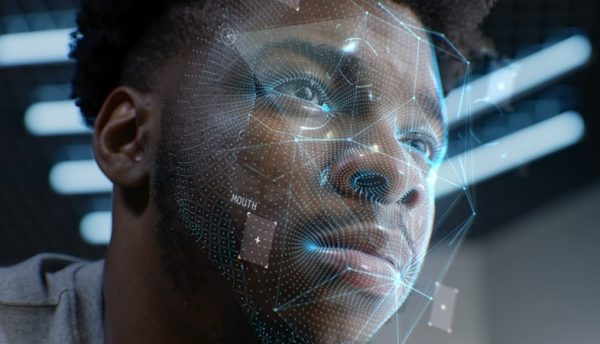Password technology has caused widespread controversy among business leaders who demand safer, more secure ways of protecting their data. Sabrina Gross, Regional Director of Strategic Partners at Veridas, discusses the benefits of biometrics as an alternative to password-based security, as well as its ability to make processes much more seamless and efficient.
Faced with increasingly widespread and sophisticated cyber threats, businesses today desperately need more robust ways of handling digital identities. With billions of credentials stolen yearly and over 80% of breaches involving weak or reused passwords, there is a pressing need to move away from this decades-old system.
Biometric technology is emerging as a game-changer for securing user identity. Biometric factors such as our faces and voices cannot be stolen and are unique, providing a highly reliable security route while enhancing user experience. However, adopting biometrics has its challenges, ranging from evolving AI-driven security threats like deepfakes to public misconceptions about how the technology functions.
Here, we explore how business leaders can overcome these issues to reap the benefits of this transformative shift.
How biometrics can finally provide an answer to the password problem
Passwords have long been the Achilles’ heel of cybersecurity. Despite advancements in encryption and security protocols, passwords remain highly susceptible to social engineering attacks. The dilemma is clear: passwords must be secure and memorable for human users, an increasingly difficult balance. Even the most complex passwords created by management software present no barrier if an attacker can trick the user into sharing it.
The issue is more pronounced when it comes to customer-facing systems. The voice channel is particularly vulnerable to social engineering and is usually the weak link of any security strategy.
Knowledge-based authentication, a common second factor in phone helplines and account systems, is easily exploited. Information such as a mother’s maiden name, first school, or favourite pet can often be easily accessed through online research and social engineering trickery.
Unlike traditional passwords, biometric identifiers such as facial or voice recognition are unique to each individual and cannot be easily replicated. Advanced biometric systems employ continuous anti-spoofing measures to counteract deepfakes and fraudulent attempts. The technology’s high accuracy rate ensures that even if you age or alter your appearance, the system will still recognise you.
Biometric technology is not just a concept of the future; it’s already a part of our daily lives. From unlocking smartphones with thumbprints to streamlined airport security via iris scans, most of us are using the technology in some form without a second thought. So, it’s not an innovation that will require users to significantly change their digital habits.
The wide-reaching security potential of biometrics was recognised in Gartner’s most recent hype cycle. Regulatory bodies are also realising its potential; for instance, the Payment Services Directive 3 (PSD3) allows biometric verification as a secure form of authentication.
The opportunity for a smooth, seamless customer journey
While focusing on cybersecurity is paramount, it’s crucial not to overlook the user experience. Cumbersome workplace security processes can impact productivity and morale, while slow and frustrating systems can lead to abandoned transactions and lost business. This is where biometric technology can provide a seamless blend of security and efficiency.
Voice authentication, for example, provides a passive yet secure method of verification. Customers calling their bank can avoid sitting through multiple rounds of questions about their personal details and knowledge-based authentication. Organisations can significantly reduce friction in the customer journey by replacing these outdated methods with biometric verification.
As highlighted in Gartner’s hype cycle, the technology is reaching a maturity level that makes it reliable and user-friendly. The goal is to create an anti-fraud solution that enhances, rather than hinders, the customer experience, aligning perfectly with efforts to drive effective customer interactions.
Still, persistent challenges must be addressed for the technology to continue its progress, particularly around privacy and security.
Tackling fears and misconceptions
Despite the rapid advancements in biometrics and its increasingly common usage in day-to-day life, there are still common misconceptions about the technology. These ideas have often been fuelled by popular media and entertainment portrayals, with hi-tech gadgets being used to easily fool security systems. Mention face or voice biometrics and many people will automatically think of Tom Cruise in Mission Impossible, slipping through secure facilities with his flawless facemask and voice changer.
More recently, deepfake technology has perpetuated this idea of vulnerability and there is significant concern around AI-generated synthetic voices in particular. However, while the technology is certainly a threat that needs close monitoring, advanced algorithms are already in place to detect and differentiate between genuine and synthetic voices by detecting minute inconsistencies and sound artefacts.
There is also a general lack of knowledge about how biometrics function. There is a tendency to assume that systems will take a copy of the user’s information and store it for later use. This conjures the image of a vault containing copies of our faces, voices and fingerprints – just waiting for an enterprising cybercriminal to hijack.
However, it’s crucial to separate fiction from fact. Biometric systems today work though converting data into numerical vectors which only work with that specific process. Even if attackers could break through multiple layers of security and encryption, they would not find any biometrics usable for identity theft or fraud. Additionally, biometric systems currently are not interoperable with each other, meaning that the same biometric vectors cannot be used by different systems, or by different models of the same biometric engine. For example, if you register your face to access a bank account, that registered biometric data cannot be used to access another service, as each vector contains contextual data that links them to each specific transaction.
Transparency around these concerns is key to building trust. Organisations must be honest about how biometric data is used and stored, ensuring robust security measures are in place. By educating users and dispelling myths, we can move towards a more informed acceptance of this transformative technology. When it comes to getting the best out of biometrics within the business, education and awareness for senior leadership is also important.
Getting the C-suite on board
Gaining the support of the C-suite is essential for successful biometric implementation. Education is key here, as many business leaders may not fully grasp the multitude of use cases that biometrics offer, often viewing it as just another security measure.
However, the technology’s applications extend far beyond stronger security, with huge transformative potential for many core business processes. As such, biometrics should be framed around its potential for improving efficiency, unlocking new opportunities and driving business growth.
This is particularly true for industries such as finance and healthcare, which must walk a fine line between accessibility and security. Physical biometrics are delivering powerful results in reducing crowds and queue times in fields such as travel and entertainment venues.
Alongside emphasising the opportunity, addressing any concerns and misconceptions and tackling them head on is important. The fact that multiple regulatory bodies are moving towards biometrics can help solidify its reputation.
However, not all biometrics are created equal, so it’s essential to take the time to research the field and choose solutions that have a high level of assurance. Certifications like NIST and ISO standards serve as benchmarks for reliability and security, guiding organisations in choosing the most robust solutions. Investing in comprehensive solutions that can cover multiple needs such as facial, voice, or document verification, as well as those agile enough to adapt to emerging threats is also beneficial.
Biometric technology offers a transformative approach to both security and wider business processes, balancing robust security with enhanced user experience. However, its success hinges on overcoming misconceptions and evolving threats. A nuanced understanding of biometrics is vital for decision-makers navigating this transformative shift.
Click below to share this article







